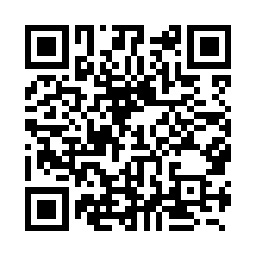
Howland Island

Coordinates: 0°48′25.84″N 176°36′59.48″W / 0.8071778°N 176.6165222°W / 0.8071778; -176.6165222Howland Island (/ˈhaʊlənd/) is an uninhabited coral island located just north of the equator in the central Pacific Ocean, about 1,700 nautical miles (3,100 km) southwest of Honolulu. The island lies almost halfway between Hawaii and Australia and is an unincorporated, unorganized territory of the United States. Together with Baker Island it forms part of the Phoenix Islands. For statistical purposes, Howland is grouped as one of the United States Minor Outlying Islands. The island has an elongated banana-shape on a north–south axis, and covers 2.6 square kilometres (640 acres).Earhart Light with post World War II repairsAircraft wreckage on HowlandItascatown settlement remainsHowland island floraHowland island flora (leeward)Brown boobiesBrown boobiesRuddy turnstones Coordinates: 0°48′25.84″N 176°36′59.48″W / 0.8071778°N 176.6165222°W / 0.8071778; -176.6165222Howland Island (/ˈhaʊlənd/) is an uninhabited coral island located just north of the equator in the central Pacific Ocean, about 1,700 nautical miles (3,100 km) southwest of Honolulu. The island lies almost halfway between Hawaii and Australia and is an unincorporated, unorganized territory of the United States. Together with Baker Island it forms part of the Phoenix Islands. For statistical purposes, Howland is grouped as one of the United States Minor Outlying Islands. The island has an elongated banana-shape on a north–south axis, and covers 2.6 square kilometres (640 acres). Howland Island National Wildlife Refuge consists of the entire island and the surrounding 32,074 acres (129.80 km2) of submerged land. The island is managed by the U.S. Fish and Wildlife Service as an insular area under the U.S. Department of the Interior and is part of the Pacific Remote Islands Marine National Monument. The atoll has no economic activity. It is perhaps best known as the island Amelia Earhart was searching for but never reached when her airplane disappeared on July 2, 1937, during her planned round-the-world flight. Airstrips constructed to accommodate her planned stopover were subsequently damaged, were not maintained and gradually disappeared. There are no harbors or docks. The fringing reefs may pose a maritime hazard. There is a boat landing area along the middle of the sandy beach on the west coast, as well as a crumbling day beacon. The island is visited every two years by the U.S. Fish and Wildlife Service. The climate is equatorial, with little rainfall and intense sunshine. Temperatures are moderated somewhat by a constant wind from the east. The terrain is low-lying and sandy: a coral island surrounded by a narrow fringing reef with a slightly raised central area. The highest point is about six meters above sea level. There are no natural fresh water resources. The landscape features scattered grasses along with prostrate vines and low-growing pisonia trees and shrubs. A 1942 eyewitness description spoke of 'a low grove of dead and decaying kou trees' on a very shallow hill at the island's center. In 2000, a visitor accompanying a scientific expedition reported seeing 'a flat bulldozed plain of coral sand, without a single tree' and some traces of building ruins from colonization or World War II building efforts, though it was all wood and stone ruins covered in flora and fauna that continues to grow on this island to this day. Howland is primarily a nesting, roosting and foraging habitat for seabirds, shorebirds and marine wildlife. The U.S. claims an Exclusive Economic Zone of 200 nautical miles (370 km) and a territorial sea of 12 nautical miles (22 km) around the island. Since Howland Island is uninhabited, no time zone is specified. It lies within a nautical time zone which is 12 hours behind UTC, named International Date Line West (IDLW). Howland Island and Baker Island are the only places on Earth observing this time zone. This time zone is also called AoE, Anywhere on Earth, which is a calendar designation which indicates that a period expires when the date passes everywhere on Earth. Sparse remnants of trails and other artifacts indicate a sporadic early Polynesian presence. A canoe, a blue bead, pieces of bamboo, and other relics of early settlers have been found. The island's prehistoric settlement may have begun about 1000 BC when eastern Melanesians traveled north and may have extended down to Rawaki, Kanton, Manra and Orona of the Phoenix Islands, 500 to 700 km southeast. K.P. Emery, an ethnologist for Honolulu's Bernice P. Bishop Museum, indicated that settlers on Manra Island were apparently of two distinct groups, one Polynesian and the other Micronesian, hence the same might have been true on Howland Island, though no proof of this has been found. The difficult life on these isolated islands along with unreliable fresh water supplies may have led to the dereliction or extinction of the settlements, much the same as other islands in the area (such as Kiritimati and Pitcairn) were abandoned.



